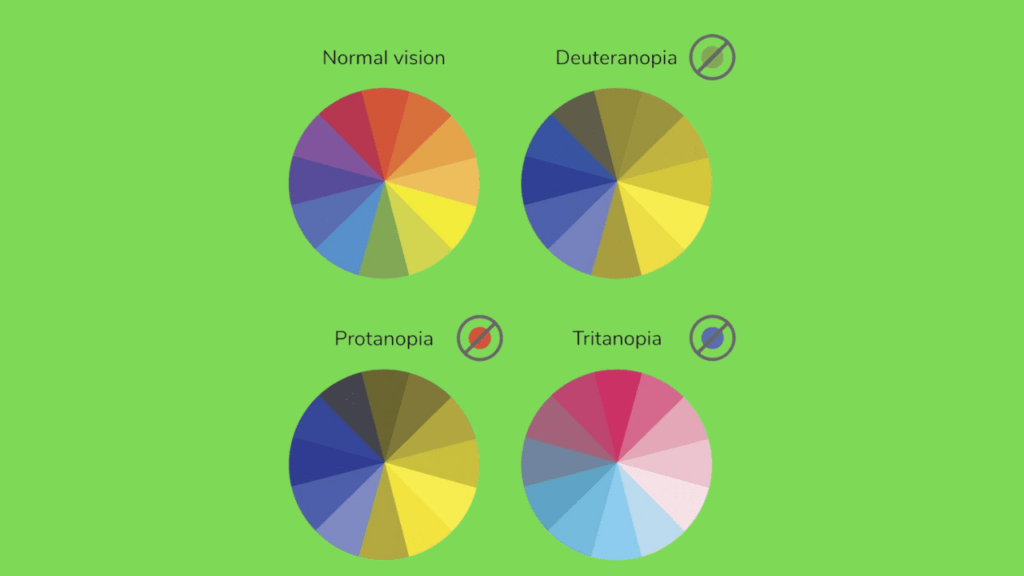Whether you’re watching a sports game, picking out ripe fruit, or doing an art design with your kiddies, colors play a significant part in our diurnal lives. But with up to 8 percent of men and 0.5 percent of women passing red-green color blindness, life for some is n’t so straightforward.
Color blindness, or color insufficiency, is caused by inheritable mutations or damage to cells at the reverse of the eye. It is these cells that give us the ability to see color.
The utmost individualities who are colorblind are unfit to see one of the three colors that the mortal eye can distinguish blue, green, and red.
As a matter of fact, no two people have the identical perception of any given color. That’s because color vision is a complex interplay between photoreceptors, the optical whim-whams, and the brain.
The optic vision of color
Visible light is a kind of electromagnetic radiation that is visible to humans. mortal eyes have the capability to see light swells ranging from 420 nanometers, which is blue, to 680 nanometers, which is red.
The cells that detect color are called cone cells, and they are found in the retina near the rear of the eye.One kind of color photoreceptor that can detect red, green, or blue light is present in each cone cell.
The photoreceptors on the cone cells in the eye are excited when light enters, and this stimulation is sent to the brain by the optical whiplash. We are able to perceive complex colors because of the information from all three photoreceptors working together.
The numerous tones of color blindness
Men are disproportionately affected by color deficiency due to the X chromosome housing the genes that produce the green and red photoreceptors.
A man who has inherited one shifted dupe of one of these genes will, thus, be colorblind, as men only have one X chromosome. But women have two clones of this chromosome, and the chance of inheriting a non-mutated photoreceptor gene is latterly lesser.
Color blindness also varies with race. A population study of preschool children linked the rates of color blindness to be loftiest amongnon-Hispanic males and smallest among black males.

Of men of Northern European descent, about 1 in 12 suffer from red-green colorblindness. This category comprises individuals who have mutations in either the green (producing deuteranopia) or red (causing protanopia) photoreceptor genes.
Tritanopia, or blue-unheroic color blindness, is uncommon and inversely affects men and women.Complete color blindness is veritably rare, and those who witness it frequently have other problems with their sight in addition to lack of color vision.
There are no treatments for color blindness, but experimental gene remedy has been shown to work in beast models.
‘ Stop asking me what color effects are’
floundering to pick ripe fruit or choose matching colors for an outfit might be more important to some than others. However, color blind people may encounter significant obstacles in their lifetime.
Children may struggle to follow multicolored signposts around their academy. And for those who play sports, it can be delicate to distinguish teammates from the opposition.
Likewise, grown-ups frequently encounter color- enciphered data, similar as graphs and maps, in their professional lives. And certain jobs, similar as aviators and safety staff on railroads, count colorblind individualities. For some, this may mean being unfit to take up their dream profession.
UK resident Matt Earwaker of Brighton was interviewed by Medical News Today. He’s red-green colorblind. He told us the practical advice that he gives his musketeers “ Stop asking me what color effects are. ”
“ The only real issue I’ve is with analogous colors on board games, so let me use the obviously different colors, like white, ” he added.
Chances are high that you know someone who’s colorblind. Steering clear of reds and flora is a good place to start, but any color that contains red or green rudiments may be confusing. More still, let them pick the color of pencils, data maps, or players on a board game, and flash back for the coming time.
And whatever you do, do n’t keep asking them to tell you what color effects are!


1 thought on “Color blindness: When brown seems to be red”
Comments are closed.